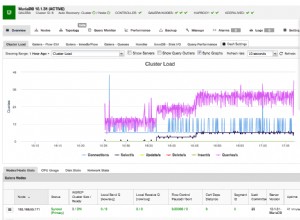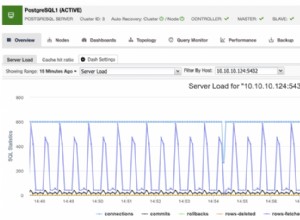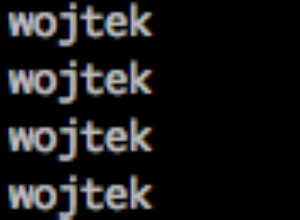Je sais que c'est vieux, mais il m'a fallu un certain temps pour trouver la réponse et cette question occupe une place de choix sur Google.
J'ai trouvé le code suivant et je l'ai modifié :
INSERT IGNORE INTO my_table VALUES (1,1), (1,2), (1,3);
DELETE FROM my_table WHERE c1 NOT IN (1,2,3) AND my_table = 1;
Origine du code source :http://borzacchiello.it/how-to -update-a-jonction-table/
Mon code que j'ai modifié pour l'utiliser avec les variables PHP et les boucles PDO :
$a_id = $my_main_id //this would be c1 in the above question
//Set Variable From Post
$var_1 = isset($_POST['var_1']) ? $_POST['var_1'] : '';
$var_2 = isset($_POST['var_2']) ? $_POST['var_2'] : '';
//etc, etc, etc
//put variables into array
$data = array('var_1'=>$var_1, 'var_2'=>$var_2, 'var_3'=>$var_3, 'var_4'=>$var_4, 'tarp_5'=>$tarp_5);
//get count of variable that contain data and not empty
$data_array_count = 0;
foreach ($data as $column => $value) {
if($value != '') {
$data_array_count = ++$data_array_count;
}
}
//if contains atleast one variable run update code
if($data_array_count != 0) {
//loops through and inserts each varible in array
foreach ($data as $column => $value) {
//ignores variables without any data
if($value != '') {
$insert = $db->prepare("INSERT IGNORE my_table (a_id, b_id) VALUES (:a_id, :b_id)");
$insert->execute(array(':a_id' => $a_id,
':b_id' => $value ));
}
}
//sets up variables in array to remove any records that need to be deleted
$columns = "";
$holders = "";
foreach ($data as $column => $value) {
if($value != '') {
$columns .= ($columns == "") ? "" : ", ";
$columns .= $column;
$holders .= ($holders == "") ? "" : ", ";
$holders .= ":$column";
}
}
$delete = $db->prepare("DELETE FROM my_table WHERE accessory_id NOT IN ($holders) AND (carrier_id = :a_id)");
//bind value for main id
$delete->bindValue(":a_id", $a_id);
//loop to bind value for each variable stored in array with data
foreach($data as $placeholder => $value) {
if($value != '') {
$delete->bindValue(":" . $placeholder, $value);
}
}
$delete->execute();
}
En utilisant l'exemple de la question d'origine, vous devrez exécuter ce code pour chaque c1 numéro d'identification que vous vouliez mettre à jour (c1 serait l'équivalent du $a_id variable dans mon exemple).




